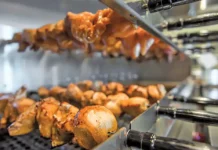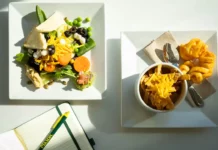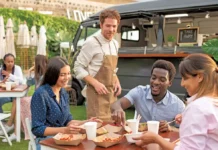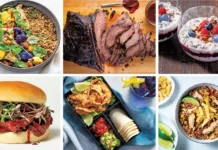President of Metropolitan Club Managers Assocation & General Manager of Wykagyl Country Club
How did you get into the industry?
By chance, I literally started working as a receptionist in 1977 at the Larchmont Yacht Club and worked there through college right through my time at Arizona State. I progressed and ended up being the Maitre d’ and Captain. To tell you the truth I grew up in very modest means and I though that if I worked at a club I would learn how people of wealth and successful means were made and that it would rub off on me and with that would come the key to wealth.
So what did you find out?
I realized that there are a very wide range of people. I found out quickly that the most successful people from all walks of life are just very down to earth.
How did you gain the experience you needed in food and beverage to succeed?
While at Arizona State, I worked at everything from delis to high-end restaurants. Then when I transferred to Florida Atlantic in Boca Raton I had the opportunity to work at a number of high-end restaurants at Boca West. I picked up something at each of these that showed me what you need to do to be successful. Everybody’s a food critic; everybody knows what you should be doing.
So what led to Club Management?
I tried to assess my abilities when I got out of school. I knew I could sell, so I thought that Wall Street was the place to be. It was a bull market, so I worked until I became a broker at Smith Barney. What I didn’t realize is that most folks who succeed on Wall Street bring a book of business with them that in many cases comes from family and friends to cover the cost of maintaining a desk. For me it was 120 cold calls a day. But I built a great set of selling and interpersonal skills to sell intangibles to very high wealthy individuals like a stock certificate that you never saw and to develop very thick skin. At the same time, I had to pay the bills because I was working on straight commission. So on the weekends I worked as the maitre d’ at Larchmont Yacht Club. I ran their dining room and handled tableside service and cooking and presented the specials and managed the wait staff. It was interesting living two very different lives going from a suit to a tuxedo.
What led to a full time switch?
I began to transition out of the financial field and was hired by Bill Jessup. I knew that I had a passion for the food and beverage and the club business. I began full time as the assistant food and beverage manager at Larchmont. I learned very quickly how different preparing for lunch is every day versus the operating of a la carte and catering and banquets. I learned very quickly and continued to learn that the toughest part is trying to combine an a la carte restaurant and banquet facility.
What did you learn at Siwanoy?
It was a great time to start in club management. The club had great resources. It was a little stodgy, different clientele, more pink and green pants. Professional managers of country clubs were coming into their own. Before that it had been mostly maitre d’s and Europeans who were making the transition without any formal training.
They knew food and beverage and service but didn’t understand the administration. I had to go from smart food and beverage guy to a Chief Operating Officer. So I had the finance, interpersonal skills and the background for working in 30 different restaurants. At a club like Siwanoy you needed to have your hand on the pulse of the financial end of the operation.
Define what a club COO focuses on?
We run a very diversified small business with revenues in excess of $10mill that today’s club manager is responsible for. That’s why there is a full portfolio of certification to become a club manager today.
It encompasses a $2million plus food and bev business as well as golf management, tennis and swimming with an Olympic sized pool. Then you have insurance and HR responsibilities. Keep in mind that in the height of our season, we have 100 plus employees.
So what becomes the key to success in running a club?
It’s all about participation from both your members and team. I need our members to be using the facilities. The key is to create participating members that are spending money by coming and playing golf and spending the $150 in the grillroom and pro shop.
We use all the social media to sell the facilities and events to our membership. To me it starts with a pristine look by spending money on the facility. This then leads to our members bringing in their guests who then look to us as a venue for their special events. For us the focus is on keeping clean and fresh with the golf course in the best shape of any local club. We’ll spend $2 million a year on the course alone. For many years we actually hosted an LPGA event.
What are the pros and cons of a club hosting a pro golf event?
The LPGA was here before me. It was a financial decision. It was a money loser. In addition, the wear and tear on your club can be very difficult. The logistics of parking and taking away your golf course from your members makes this a very easy decision.
What are the elements of a successful foodservice operation at a club?
The key component is consistency on how you approach your menu production. People are creatures of habit. Even with a minimum and the greatest food, your member is only going to come once a week. You have to understand that we are a 501c7 not for profit. which enables us to generate 15% of our business outside the club with special events.
At the same time, because we are a non-profit, we can’t advertise, so it’s all about getting your membership to promote. If a club is just in the a la carte business, it will lose $300k to $400k as a result of 50% to 60% in labor costs and then 40% food cost. So we need outside weddings and events to make the club a success. At the same time, we need to make every member visit special. So we know what our members like. We’re using technology to understand how they like their favorite cocktails, how many olives and how they like their food cooked.
How are the needs of a city club different from those of a suburban club like yours?
A city club provides its members with the weekday services they need from lunch to business meeting venues. Our job is to provide their weekend sporting activity like golf and tennis. Think of us as a weekend oasis.
What trends are you seeing on menus?
After doing this for so many years believe me just put a heart healthy next to something and it simply won’t sell. Somehow healthy has always led people to think: “no taste.” Certainly there are less cream sauces and more broiling replacing frying.
What kind of culinary talent do clubs attract today?
A very interesting type of chef from a restaurant chef. We have a more finite menu with much more diversity at the same time. Our chefs need to go from chicken fingers and eggs benedict to a seafood entree plate finished with couscous.
They need to work hard and enjoy the opportunity to succeed in both an a la carte and then a party for 300 simultaneously. It’s very important to understand that we are not in competition with the Manhattan restaurant scene. We want a “Wow” factor from a taste standpoint with the comfort of making them feel like they are at home. They also get to flex their creativity through events like small wine tasting type parties including a blind folded “Dark Dining” event we just ran.
So with the challenge of operating both an a la carte and catering facility what is your approach to the upgrade of a kitchen?
That’s the million-dollar question. Remember a lot of these clubs were built as private residences with no thought towards the volume that a club would have to produce. I was fortunate at Siwanoy with the kitchen being centrally located.
So the first challenge becomes how to handle pre-prep. I just don’t like what holding cabinets do to food. My approach is to build steam tables in pull out drawers and then insert the hotel pan into the draw and create an organized system to handle the plating.
This business is all about consistency, so whether you are the first served or the 300th served, we want you to have the very same quality. That’s why it all starts with helping our catering customer understand the importance of creating menus with a minimum of choice that will lead to a high quality meal. We avoid the customer that comes in here looking to dictate a menu.
At Wykagyl, we have two kitchens and it’s a constant balance to coordinate the a la carte line and the special event. The event needs to start on time and we need to coordinate that with our member reservations.
What goals does the association have for this year?
I want to help some of our older managers find new employment opportunities. With new board members and president at clubs, the club manager has a new boss and that creates lots of turnover.
So we want to help our members get up to date with technology that they can then bring to a new opportunity. We want to continue to be an influence in our local communities through our charity: AABR, the Association for the Blind and the Retarded and a number of other initiatives. As part of being good neighbors, we continue to be concerned with being green and sustainable.























